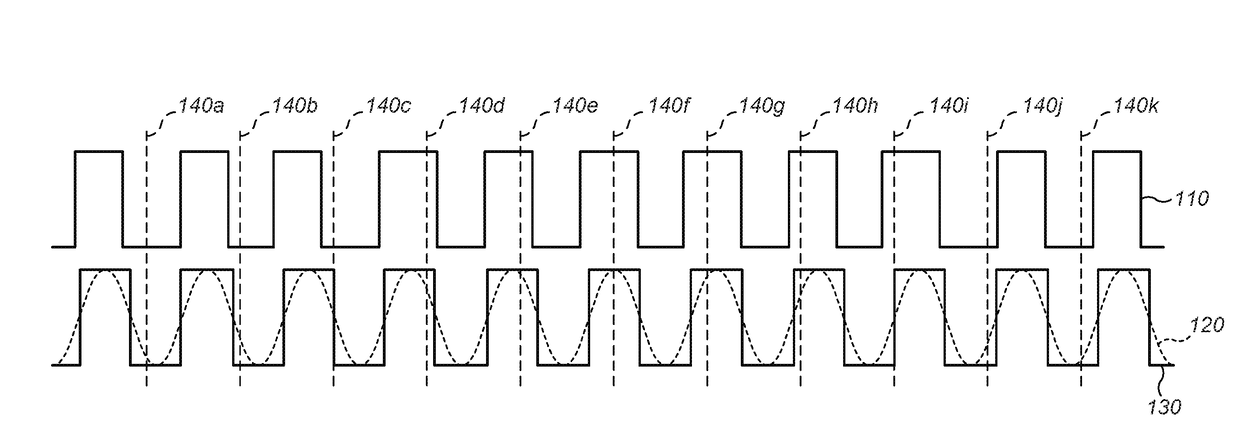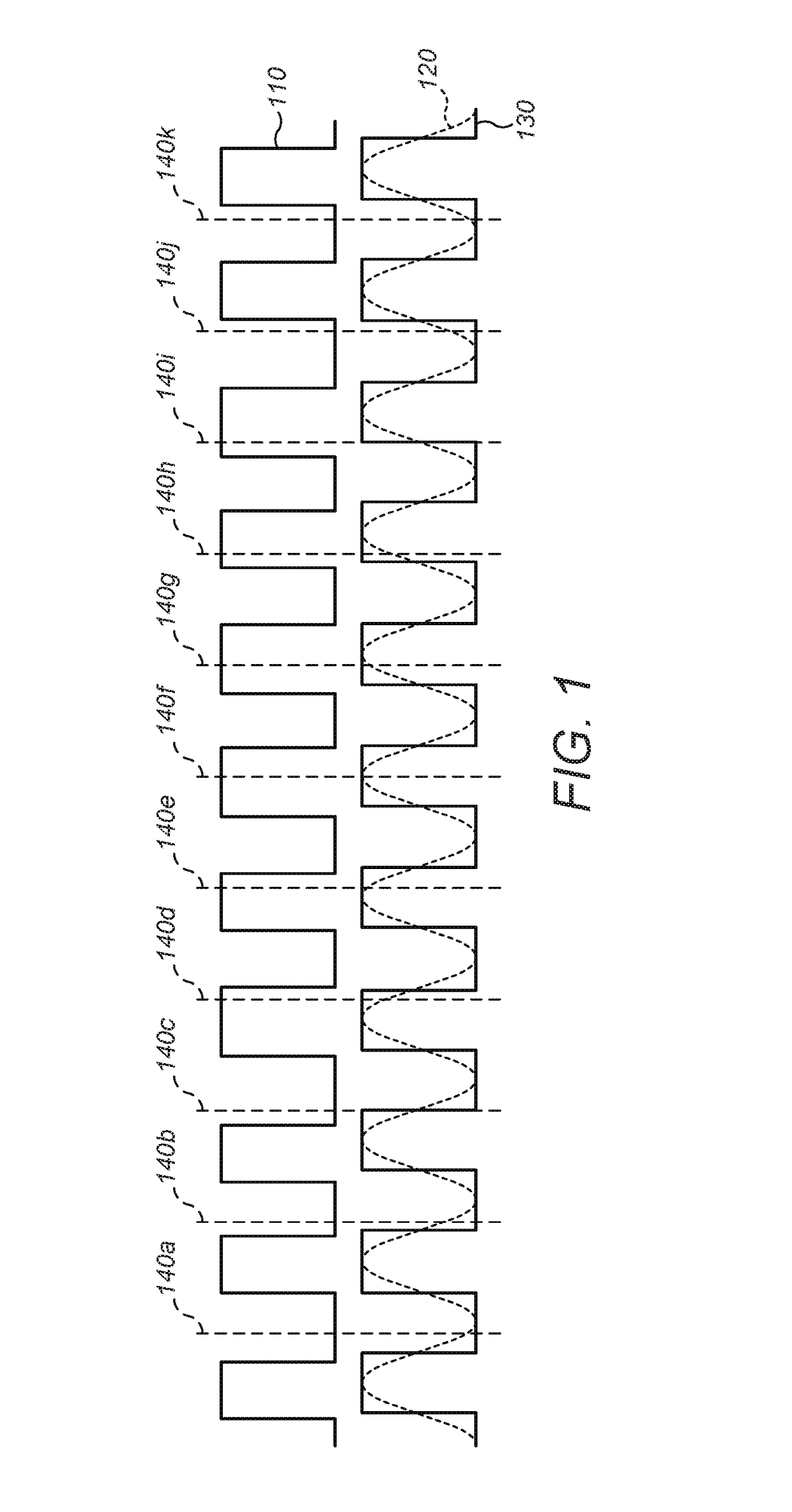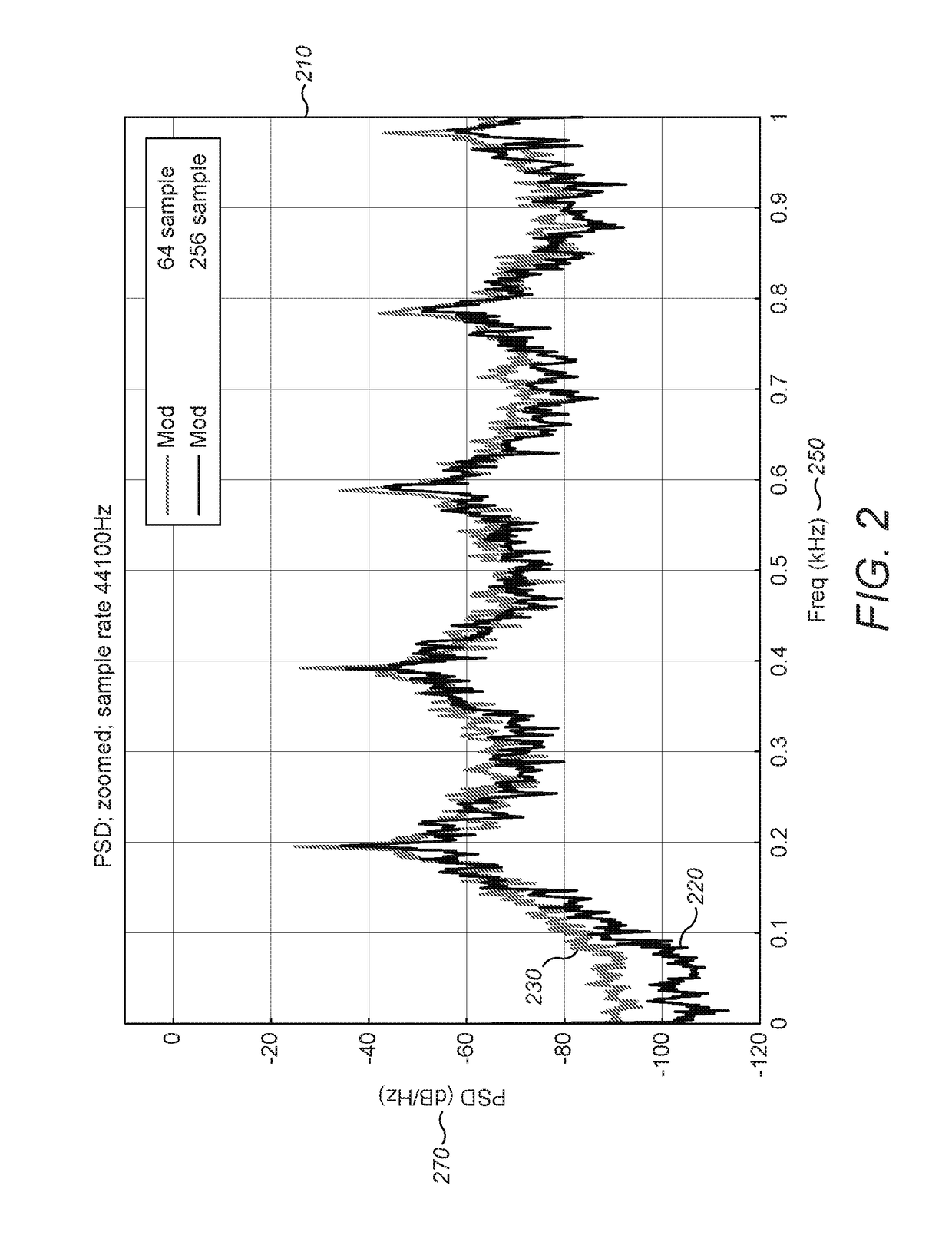Interference Reduction Techniques in Haptic Systems
a technology of haptic systems and reduction techniques, applied in the field of haptic-based systems, can solve the problems of insufficient reproduction of physical transducers, approach may produce additional audible noise, and sharp frequency changes
- Summary
- Abstract
- Description
- Claims
- Application Information
AI Technical Summary
Benefits of technology
Problems solved by technology
Method used
Image
Examples
Embodiment Construction
I. Continuous Phase Manipulation for Dynamic Phased-Array Systems
[0027]A. Effects of C0 Continuity in Phase
[0028]The class C0 consists of all continuous functions. The haptic system, which may include a mid-air haptic system, may be updated by continuously introducing phase and amplitude changes to each transducer. These phase and amplitude changes are generated by interpolating system states, which are representations of the state of the full set of transducers. These interpolations may generate a newly defined delay and duty cycle measured in ticks of an output clock that is ticking at some multiple greater than twice the carrier frequency. This delay and duty cycle can be interpreted as a string of binary digits with a length of this multiple in which the signal is high or 1 for some quantity of these ticks and low or 0 for the remainder.
[0029]This approach is illustrated in FIG. 1 where a signal generated in this way is shown to exhibit unwanted fluctuations in duty cycle and fr...
PUM
 Login to View More
Login to View More Abstract
Description
Claims
Application Information
 Login to View More
Login to View More - R&D
- Intellectual Property
- Life Sciences
- Materials
- Tech Scout
- Unparalleled Data Quality
- Higher Quality Content
- 60% Fewer Hallucinations
Browse by: Latest US Patents, China's latest patents, Technical Efficacy Thesaurus, Application Domain, Technology Topic, Popular Technical Reports.
© 2025 PatSnap. All rights reserved.Legal|Privacy policy|Modern Slavery Act Transparency Statement|Sitemap|About US| Contact US: help@patsnap.com



